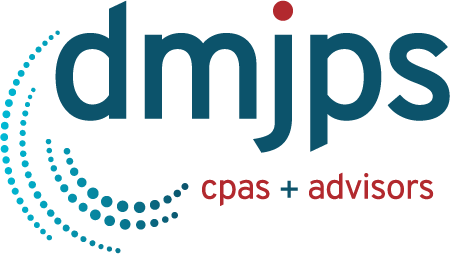If you have residences, assets, or businesses in coastal North Carolina then you are very familiar with the National Hurricane Center’s cone of uncertainty and the maps produced in advance of a hurricane. If you are in the cone when a hurricane approaches, you know when to start preparations for the upcoming storm and 2020 has been a very long stormy year for the business community and for tax professionals.

As we prepare for year-end, here are some of the uncertainties:
- When are the Paycheck Protection Program (PPP) loans deemed forgiven? How does this affect financial statements and tax returns? At year-end, are the PPP proceeds a liability on the balance sheet or reported in net income on the income statement?
- What period should I use for the PPP forgiveness calculations? Many banks are pushing out PPP forgiveness information to customers now. Many businesses will have to use the 24-week period following receipt of the PPP funds to meet the debt forgiveness rules.
- Will PPP loans under $150,000 be automatically forgiven? There has been much public discussion in this area but no action taken by the Small Business Administration or Congress.
- Will expenses paid from PPP loans be deductible? Current IRS guidance denies deductions for expenses paid from PPP loan funds. Many in Congress have stated the IRS position was not Congressional intent when this legislation was passed this past March. Congress has yet to take action on clarifying this.
- If expenses paid with PPP funds remain nondeductible, which tax year will the nondeductible expenses fall? Are these expenses nondeductible when paid (2020-tax year) or when the PPP loan is forgiven (most likely 2021)? Will my taxable income be increased in 2020 or 2021 due to receipt and expenditure of PPP loan proceeds?
- What will the 2020 election do to future tax rates and calculations of taxable income? If Biden is elected, what changes will take place and when will these changes become effective?
The coronavirus pandemic has affected businesses in many different ways and there have been winners and losers from the economic effect of the pandemic. Retail, restaurants, travel, entertainment, medical practices, and others have seen significant losses in revenues. Some businesses have seen significant increases in revenues and net income as consumers have purchased big-ticket items since they have not been able to go anywhere (travel, vacations, etc.) or confined to their homes.
Many businesses purchase equipment in the last part of the year based on the allowable current year expensing for tax purposes. With Section 179 expensing and Section 168(k) bonus depreciation rules, businesses can reduce their taxable income by certain equipment and improvement purchases placed in service by the end of the tax year. For fixed assets not expensed in the current tax year, the depreciation deductions are spread over the life of the asset—pushed forward into future tax years.
In its most simple terms, tax planning is a function of timing and rates.
- Put off until tomorrow a tax you could pay today.
- Between tax years and taxpayers, manage the effective tax rates so income is taxed at the lowest rate possible.
Businesses commonly use accelerated depreciation and retirement deductions to manage the timing of taxable income and tax rate differences between tax years.
For businesses that have experienced significant downturns in revenues and bottom line, it may beneficial to postpone putting fixed assets into service until 2021 or to hold off on retirement plan contributions. For these businesses, the non-deductibility of expenses paid from PPP funds in 2020 could offset the decreases shown in taxable income due to the pandemic. The result could be an unexpected 2020 tax liability!
For businesses that have prospered this year, fixed asset purchases and retirement plan accruals can reduce 2020 taxable income. The loss of deductible expenses paid by PPP funds will further increase taxable income, making timing deductions more valuable.
Another major concern is whether tax rates in 2021 and later years will be higher for the business community. If tax rates are higher in 2021 and later years, deductions will be more advantageous in those years than if taken in 2020.
These are the issues we will discuss in-depth with the year-end tax-planning letter coming soon. Be sure to look for your copy.
The DMJPS website is a valuable resource for information on the 2020 tax legislation and the PPP loan program. Every business and tax situation is different and this year brings a multitude of new issues. Our tax team is ready to meet with you and analyze your business and tax situation before the end of the year. Like the National Hurricane Center forecasters, we cannot pinpoint the exact track of tax legislation. Contact us to help establish a plan based on your current business circumstances while monitoring potential changes to tax laws.

